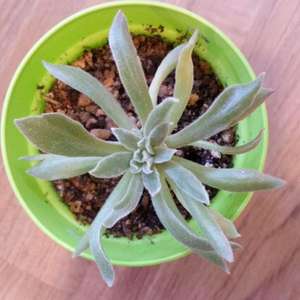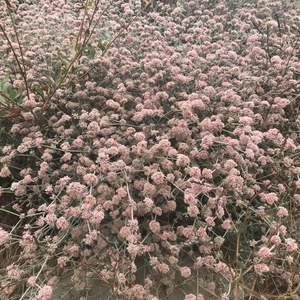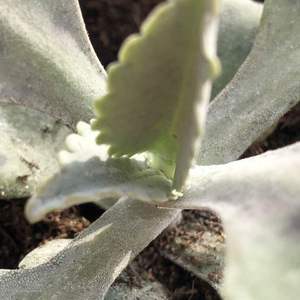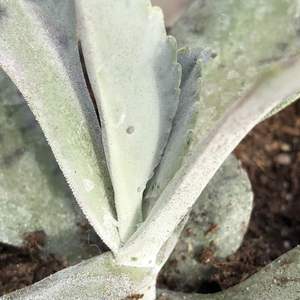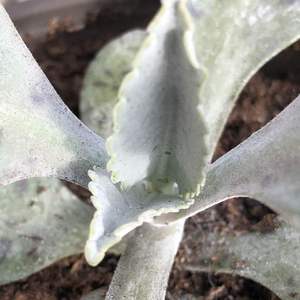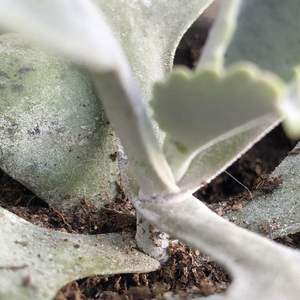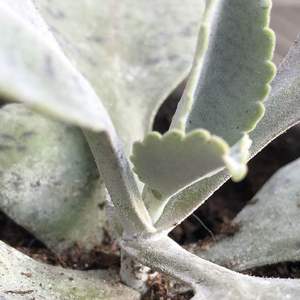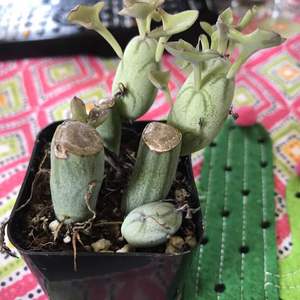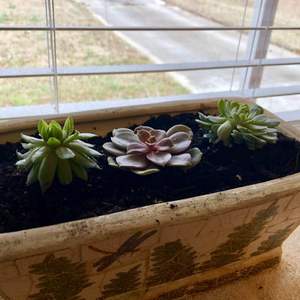文章
Miss Chen
2021年07月05日

Distribution and habitat: Euphorbia milii is a species of flowering plant in the spurge family Euphorbiaciae, native to Madagascar. It is a succulent climbing shrub with densely spiny stems. The straight, slender spines help Euphorbia milii scramble over other plants. The leaves are found mainly on new growth and are obovate. The flowers are small, subtended by a pair of conspicuous petal-like bracts, variably red, pink or white.
Description: Euphorbia milii is a dense shrub up to a metre (3 feet) or so tall, it has 2cm (0.8 inch) tick dark brown stems armed on all sided and at frequent intervals with sharp spines of varying length (mostly around 1-2cm (0.4-0.8 inch)).
Clusters of bright green, elliptic, 5-6cm (2-2.4 inch) leaves, which are produced near the growing tips of the stems, last for at least several months before dropping off, leaving the plant’s spiny stems permanently bare. Old leaves are not replaced and new ones will appear only on new terminal growth.
The flowers are tiny, but each is surrounded by a pair of 2cm kidney-shaped, bright red bracts, which look rather like petals. Clusters of from two to six of these paired, flower-like bracts appear on 5cm (2 inch) stalk at the ends of actively growing spiny stems. They are not produced on the old stems. A sticky substance on the flower stalks adheres to the finger if touched. The main flowering season normally last from early spring through late summer, but flowering can be continuous if plants get exceptionally good light.

Houseplant care: Euphorbia milii does not require too much care but as Euphorbia milii is one of the spiniest plants, be particularly careful when handling the plant.
Euphorbia milii is not fast growing, so pruning is usually not necessary until the second or third year. Pruning is best done during cool, dry weather in late spring to lessen the risk of stem disease. Remove only dead and overly tangled stems.
Light: Euphorbia milii needs all the sun it can get. The brighter and more constant sunlight, the longer its flowering season will be.
Temperature: Warm rooms and dry air normally suit these plants, through they can, if necessary, tolerate temperature as low as 13°C (55°F). If the air becomes any cooler, the leaves are likely to begin falling prematurely.
Watering: Water plants grown in normal room temperatures moderately, enough to make the entire potting mixture moist, but allowing the top couple of centimetres (0.8 inch) of the mixture to dry out between waterings. After the main flowering season ends, give to plant a little less water; and if the temperature fall below 16°C (61°F) for long time, let the top half of the mixture dry out between waterings. Never let the roots to dry out completely as dry roots can cause premature leaf-fail.
Fertilising: Apply week liquid fertiliser every two weeks from the late spring to early autumn. If plants are in such an ideal condition that they will continue to flower during the winter, feed them once a month.
Potting and repotting: Use a combination of two-thirds of soil-based potting mixture and one third of coarse sand or perlite for good drainage. Move the plants into pots one size larger in early spring every second year. Older plants which have reached maximum convenient pot size should be top-dressed annually with fresh potting mixture. It is essential to pack the mixture firmily around the roots of the plant when potting Euphorbia milii.
Gardening: When grow Euphorbia milii outdoors, choose a sunny, well-drained planting site. This plant will tolerate a few hours of shade during the hottest part of the day but does require sunshine for at least two-thirds of the day. Soil drainage must be excellent or the plant will develop root rot, fatal for plant. Add soil amendments, such as compost or peat moss, if the soil is sandy or of poor quality.
Dig a hole for each plant as deep as the root ball and twice as wide. Space plants 0.5m (2 feet) apart to ensure proper air circulation. Carefully remove the plant from its container and inspect the roots. Prune away any broken, shriveled or mushy roots, then gently loosen the soil around the outside of the root ball with the fingers. Set the plant into the planting hole at the same level as it was in the container. Backfill around the roots with soil, pressing firmly with the hands to remove air pockets. Water around the base of the plant to settle the soil; keep water off the foliage.
Water newly planted Euphorbia milii often enough to keep the soil slightly moist. The plant has established itself when it start new growth. At that point, water Euphorbia milii only when the top 3cm (1 inch) of soil is dry.
Propagation: New plants can be raised from short tip cuttings taken in spring or early summer. Use a sharp knife or razor blade to cut off growing tips 8-10cm (3-4 inch) long and stop the latex flow immediately by spaying the old plant and dipping the cuttings in water. Allow the cuttings to dry out for a day before setting them in small pots containing a slightly moist equal-parts mixture of peat moss and sand or perlite.
It is important not to let the mixture become more than slightly moist; if the potting mixture is too wet, the cuttings will rot before they can produce roots. Place the pots where they can get bright light but without direct sunlight, at normal room temperature. Keep the potting mixture just barely moist, allowing the top two-thirds to dry out between waterings. When rooting occurs (in five to eight weeks), move the young plants into the standard soil-based potting mixture and treat them as mature specimens after they have made around 5cm (2 inch) of top growth.
Problems: Euphorbia milii is generally trouble-free.
The plants will survive drought conditions, though under extreme drought leaves will drop permanently.
Stems that are cold-damaged (soft stems with burned leaves) are likely to rot and should be removed as soon as the damage is evident. Plants should be protected from freezing temperatures.
Uses: Euphorbia milii easily develops a hanging habit and is grown in window boxes or terrace planters. The attraction is the bright scarlet-bract flowers which may appear all year.
Both salt and drought-tolerant, Euphorbia milii is a valuable addition to tropical gardens.
Toxicity: The sap of Euphorbia milii can irritate the sensitive skin; that of some species is poisonous and acrid and it is therefor advisable to place the Euphorbia milii where they are unlikely to be knocked and out of the reach of young children.
Recommended varieties:
Euphorbia milii var. hislopii has tick stems armed with 2cm (0.8 inch) long spines; its lance-shaped leaves are 2cm (0.8 inch) long and its red or pink bracts are up to 2cm (0.8 inch) across.
Euphorbia milii var. splendens differ from the species in that it can grow 2m tall, its stem are 1-2cm thick and its leaves are more oblong in shape than those of Euphorbia milii.

SUMMARY:
CHARACTERISTICS:
Foliage – green
Features – flowers
Shape – upright
Height: 1m (3 feet)
PROPER CARE:
Watering in rest period – moderately
Watering in active growth period – moderately
Light – direct
Temperature in rest period – min 13°C max 24°C (55-75°F)
Temperature in active growth period – min 16°C max 24°C (61-75°F)
Humidity – low
Hardiness zone: 9b-11
Description: Euphorbia milii is a dense shrub up to a metre (3 feet) or so tall, it has 2cm (0.8 inch) tick dark brown stems armed on all sided and at frequent intervals with sharp spines of varying length (mostly around 1-2cm (0.4-0.8 inch)).
Clusters of bright green, elliptic, 5-6cm (2-2.4 inch) leaves, which are produced near the growing tips of the stems, last for at least several months before dropping off, leaving the plant’s spiny stems permanently bare. Old leaves are not replaced and new ones will appear only on new terminal growth.
The flowers are tiny, but each is surrounded by a pair of 2cm kidney-shaped, bright red bracts, which look rather like petals. Clusters of from two to six of these paired, flower-like bracts appear on 5cm (2 inch) stalk at the ends of actively growing spiny stems. They are not produced on the old stems. A sticky substance on the flower stalks adheres to the finger if touched. The main flowering season normally last from early spring through late summer, but flowering can be continuous if plants get exceptionally good light.

Houseplant care: Euphorbia milii does not require too much care but as Euphorbia milii is one of the spiniest plants, be particularly careful when handling the plant.
Euphorbia milii is not fast growing, so pruning is usually not necessary until the second or third year. Pruning is best done during cool, dry weather in late spring to lessen the risk of stem disease. Remove only dead and overly tangled stems.
Light: Euphorbia milii needs all the sun it can get. The brighter and more constant sunlight, the longer its flowering season will be.
Temperature: Warm rooms and dry air normally suit these plants, through they can, if necessary, tolerate temperature as low as 13°C (55°F). If the air becomes any cooler, the leaves are likely to begin falling prematurely.
Watering: Water plants grown in normal room temperatures moderately, enough to make the entire potting mixture moist, but allowing the top couple of centimetres (0.8 inch) of the mixture to dry out between waterings. After the main flowering season ends, give to plant a little less water; and if the temperature fall below 16°C (61°F) for long time, let the top half of the mixture dry out between waterings. Never let the roots to dry out completely as dry roots can cause premature leaf-fail.
Fertilising: Apply week liquid fertiliser every two weeks from the late spring to early autumn. If plants are in such an ideal condition that they will continue to flower during the winter, feed them once a month.
Potting and repotting: Use a combination of two-thirds of soil-based potting mixture and one third of coarse sand or perlite for good drainage. Move the plants into pots one size larger in early spring every second year. Older plants which have reached maximum convenient pot size should be top-dressed annually with fresh potting mixture. It is essential to pack the mixture firmily around the roots of the plant when potting Euphorbia milii.
Gardening: When grow Euphorbia milii outdoors, choose a sunny, well-drained planting site. This plant will tolerate a few hours of shade during the hottest part of the day but does require sunshine for at least two-thirds of the day. Soil drainage must be excellent or the plant will develop root rot, fatal for plant. Add soil amendments, such as compost or peat moss, if the soil is sandy or of poor quality.
Dig a hole for each plant as deep as the root ball and twice as wide. Space plants 0.5m (2 feet) apart to ensure proper air circulation. Carefully remove the plant from its container and inspect the roots. Prune away any broken, shriveled or mushy roots, then gently loosen the soil around the outside of the root ball with the fingers. Set the plant into the planting hole at the same level as it was in the container. Backfill around the roots with soil, pressing firmly with the hands to remove air pockets. Water around the base of the plant to settle the soil; keep water off the foliage.
Water newly planted Euphorbia milii often enough to keep the soil slightly moist. The plant has established itself when it start new growth. At that point, water Euphorbia milii only when the top 3cm (1 inch) of soil is dry.
Propagation: New plants can be raised from short tip cuttings taken in spring or early summer. Use a sharp knife or razor blade to cut off growing tips 8-10cm (3-4 inch) long and stop the latex flow immediately by spaying the old plant and dipping the cuttings in water. Allow the cuttings to dry out for a day before setting them in small pots containing a slightly moist equal-parts mixture of peat moss and sand or perlite.
It is important not to let the mixture become more than slightly moist; if the potting mixture is too wet, the cuttings will rot before they can produce roots. Place the pots where they can get bright light but without direct sunlight, at normal room temperature. Keep the potting mixture just barely moist, allowing the top two-thirds to dry out between waterings. When rooting occurs (in five to eight weeks), move the young plants into the standard soil-based potting mixture and treat them as mature specimens after they have made around 5cm (2 inch) of top growth.
Problems: Euphorbia milii is generally trouble-free.
The plants will survive drought conditions, though under extreme drought leaves will drop permanently.
Stems that are cold-damaged (soft stems with burned leaves) are likely to rot and should be removed as soon as the damage is evident. Plants should be protected from freezing temperatures.
Uses: Euphorbia milii easily develops a hanging habit and is grown in window boxes or terrace planters. The attraction is the bright scarlet-bract flowers which may appear all year.
Both salt and drought-tolerant, Euphorbia milii is a valuable addition to tropical gardens.
Toxicity: The sap of Euphorbia milii can irritate the sensitive skin; that of some species is poisonous and acrid and it is therefor advisable to place the Euphorbia milii where they are unlikely to be knocked and out of the reach of young children.
Recommended varieties:
Euphorbia milii var. hislopii has tick stems armed with 2cm (0.8 inch) long spines; its lance-shaped leaves are 2cm (0.8 inch) long and its red or pink bracts are up to 2cm (0.8 inch) across.
Euphorbia milii var. splendens differ from the species in that it can grow 2m tall, its stem are 1-2cm thick and its leaves are more oblong in shape than those of Euphorbia milii.

SUMMARY:
CHARACTERISTICS:
Foliage – green
Features – flowers
Shape – upright
Height: 1m (3 feet)
PROPER CARE:
Watering in rest period – moderately
Watering in active growth period – moderately
Light – direct
Temperature in rest period – min 13°C max 24°C (55-75°F)
Temperature in active growth period – min 16°C max 24°C (61-75°F)
Humidity – low
Hardiness zone: 9b-11
0
0
文章
莹723
2020年11月26日

When natural food is in short supply, birds need our help. What food should you provide? They find most of their food – such as insects, worms, slugs, snails and caterpillars – in the natural environment, but supplementary food in feeders can provide extra help. This is particularly useful when there is too much rain and caterpillars are washed off leaves, or in times of drought, when worms and other grubs retreat far below the soil surface.
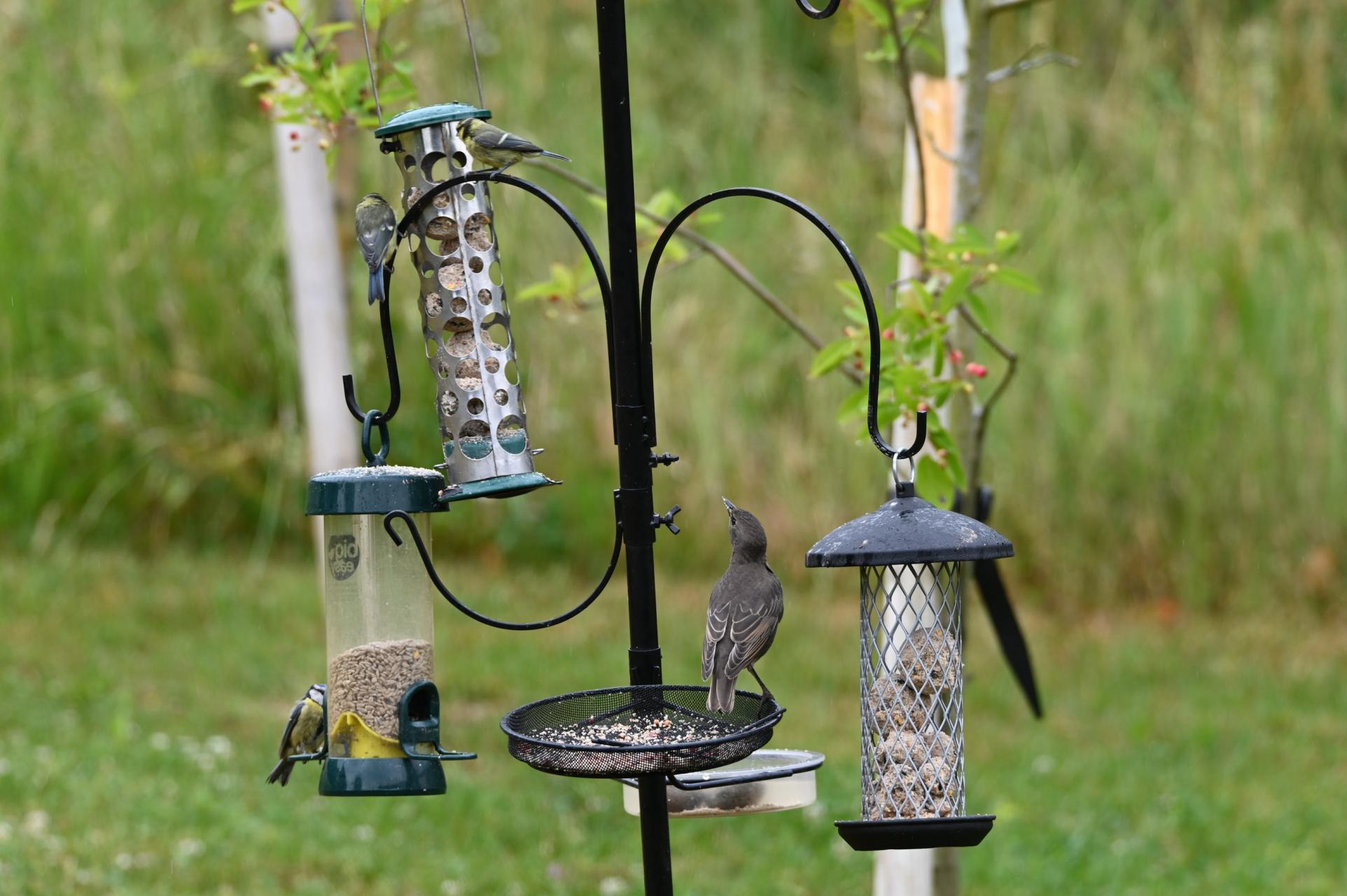
——What to feed garden birds
Sunflower hearts are a great all-round option. They contain the same high calorie content as sunflower seeds, but don’t have husks and therefore don’t make a mess. If you can provide a range of foods, however, the birds will have a choice and you’re likely to attract a wider selection. For the greatest variety leave out a seed mix, a fat-based product such as fat balls, and a protein-rich source such as mealworms.
Many gardeners leave out peanuts for the birds, but these aren’t always popular. This is due to the energy required to eat a peanut – birds have to manipulate the food in their beaks before they can swallow it, whereas other foods, such as sunflower hearts, enable them to simply grab and swallow. Larger birds, like jays and woodpeckers, can manage peanuts, and tits will persevere if they’re all that’s on offer.
Dried foods are good for year-round feeding and store well for months in a sealed container. However, live or rehydrated mealworms are a good option in spring and summer, as they help to ensure chicks in the nest get the moisture they need.
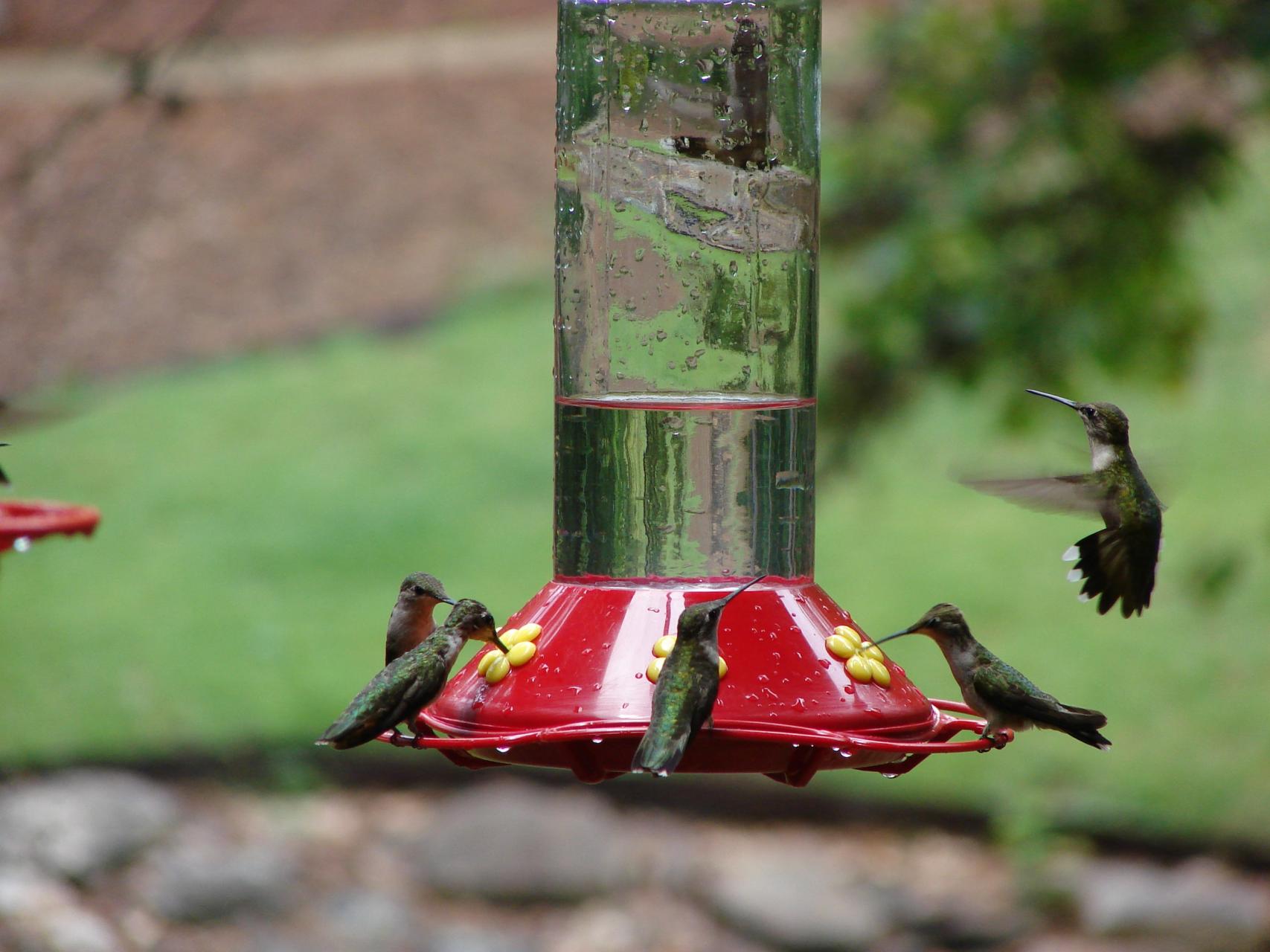
——Where to feed garden birds
While tits and finches are expert at clinging to feeders, blackbirds, dunnocks and robins are much happier foraging on a flat surface, such as a bird table, short grass or paving. The latter also makes it easier for you to clear up spillage if you need to. In fact, good hygiene is a must. A bird-feeding area can be a hotbed for disease, so clean your feeders weekly using a weak disinfectant solution, rinse well before allowing them to dry and then refilling. It’s also important to move the location of feeders every month, to prevent the build up of bacteria in any one area.
You can try to tailor your mixes to the season, but it’s easier to simply adjust what you feed according to what gets eaten – birds are good at telling you what they need.
Because birds need natural food, it’s vital to ensure that your garden is full of seeds, berries and particularly insects. Grow caterpillar foodplants such as native trees and shrubs, allow weeds to flourish at the back of your borders and consider letting and area of grass grow long. Ditching insecticides and digging a pond will also increase insect abundance in your garden, providing masses more food for garden birds.

——How to feed garden birds in winter
Snows and hard frosts are a real killer for birds, but relentless cold rain can be just as bad, and of course winter days are so short for foraging. Garden birds are focused on survival and getting enough calories to see them through each day and night.
Put out a full spread of seeds and nuts such as sunflower seeds, hearts and peanuts, plus suet treats such as insect or fruit nibbles, and fat balls. You can also include scraps such as grated cheese and crumbled pastry, plus fat from unsalted cuts of meat.


——What to feed garden birds
Sunflower hearts are a great all-round option. They contain the same high calorie content as sunflower seeds, but don’t have husks and therefore don’t make a mess. If you can provide a range of foods, however, the birds will have a choice and you’re likely to attract a wider selection. For the greatest variety leave out a seed mix, a fat-based product such as fat balls, and a protein-rich source such as mealworms.
Many gardeners leave out peanuts for the birds, but these aren’t always popular. This is due to the energy required to eat a peanut – birds have to manipulate the food in their beaks before they can swallow it, whereas other foods, such as sunflower hearts, enable them to simply grab and swallow. Larger birds, like jays and woodpeckers, can manage peanuts, and tits will persevere if they’re all that’s on offer.
Dried foods are good for year-round feeding and store well for months in a sealed container. However, live or rehydrated mealworms are a good option in spring and summer, as they help to ensure chicks in the nest get the moisture they need.

——Where to feed garden birds
While tits and finches are expert at clinging to feeders, blackbirds, dunnocks and robins are much happier foraging on a flat surface, such as a bird table, short grass or paving. The latter also makes it easier for you to clear up spillage if you need to. In fact, good hygiene is a must. A bird-feeding area can be a hotbed for disease, so clean your feeders weekly using a weak disinfectant solution, rinse well before allowing them to dry and then refilling. It’s also important to move the location of feeders every month, to prevent the build up of bacteria in any one area.
You can try to tailor your mixes to the season, but it’s easier to simply adjust what you feed according to what gets eaten – birds are good at telling you what they need.
Because birds need natural food, it’s vital to ensure that your garden is full of seeds, berries and particularly insects. Grow caterpillar foodplants such as native trees and shrubs, allow weeds to flourish at the back of your borders and consider letting and area of grass grow long. Ditching insecticides and digging a pond will also increase insect abundance in your garden, providing masses more food for garden birds.

——How to feed garden birds in winter
Snows and hard frosts are a real killer for birds, but relentless cold rain can be just as bad, and of course winter days are so short for foraging. Garden birds are focused on survival and getting enough calories to see them through each day and night.
Put out a full spread of seeds and nuts such as sunflower seeds, hearts and peanuts, plus suet treats such as insect or fruit nibbles, and fat balls. You can also include scraps such as grated cheese and crumbled pastry, plus fat from unsalted cuts of meat.

0
0
文章
莹723
2020年11月03日

Staying at home or self-isolating during the coronavirus outbreak might be challenging, especially for people who live on their own. Stay upbeat and active during the coronavirus outbreak. Gardening can help us turn this situation into a positive – we can sow seeds or plant seedlings now and watch them grow and bloom over the coming weeks and months.
Here are 10 garden jobs you can get on with now. They’ll help you to pass the time in a productive and purposeful way, getting you outdoors to enjoy fresh air, bird song and a bit of exercise.
1.Sow seeds
Sowing seeds and watching the plants grow is a great way to relieve stress. You could sow anything you fancy – annual herbs to use in cooking, flowers such as cosmos and sunflowers to brighten up the garden, or vegetables to use in nutritious meals later in the season. Use a seed tray and propagator if you have one, but pots filled with peat-free compost and covered with a clear plastic bag or clingfilm will work just as well.

2.Plant up a container display
A pretty container display can really help to lift the spirits. Consider asking someone to go to the garden centre for you, or buy mail-order plants or seeds. Choose from perennial plants that are in flower now, which you can transplant into the garden when they’re past their best, or annuals for a quick, seasonal display.

3.Feed the birds
Feeding the birds is great way to entertain yourself while self-isolating at home. Hang feeders in front of a window where you sit regularly, so you can watch the antics of the birds from your sofa. Buy feeders and food online from a reputable supplier and avoid cheaper seed mixes if possible – these are less likely to attract garden birds. Sunflower hearts are a great all-round choice, attracting a wide range of species. Why not take the time to learn the different birds that visit the feeders while you’re at it?

4.Clean the greenhouse
For many people, there’s never a good time to clean the greenhouse. But doing so will bring more light to tender seedlings growing inside, as well as remove harmful pests and pathogens, which could be lingering on from last year. This is a great, active job that might help you to work up a sweat – get your scrubbing brush, sponge and hosepipe ready, for mini workout.

5.Install a water butt
If you’ve been meaning to install a water butt for a while then now’s the time to do it. You can buy whole kits online and simply follow instructions on installing it. Wall-mounted water butts are a great way to save space. It’s fairly straightforward to connect them to a downpipe from your house, shed or greenhouse.

6.Build a garden pond
A pond is one of the best garden habitats you can create for wildlife, attracting birds, amphibians, mammals and aquatic insects. Digging a pond is labour intensive but extremely rewarding – if you’re missing your gym then this is the job for you.
Buy pond liner online and see if you can source plants from your local garden centre – again, see if they will deliver. If not, there are plenty of online retailers that sell pond plants. Choose a mix of oxygenating, floating and submerged plants, to provide the best variety of habitats.
Once you’ve dug your pond, consider buying a book on freshwater life, and a pond net, then monitor which new species colonise the water. There’s a whole new world to explore beneath the surface.
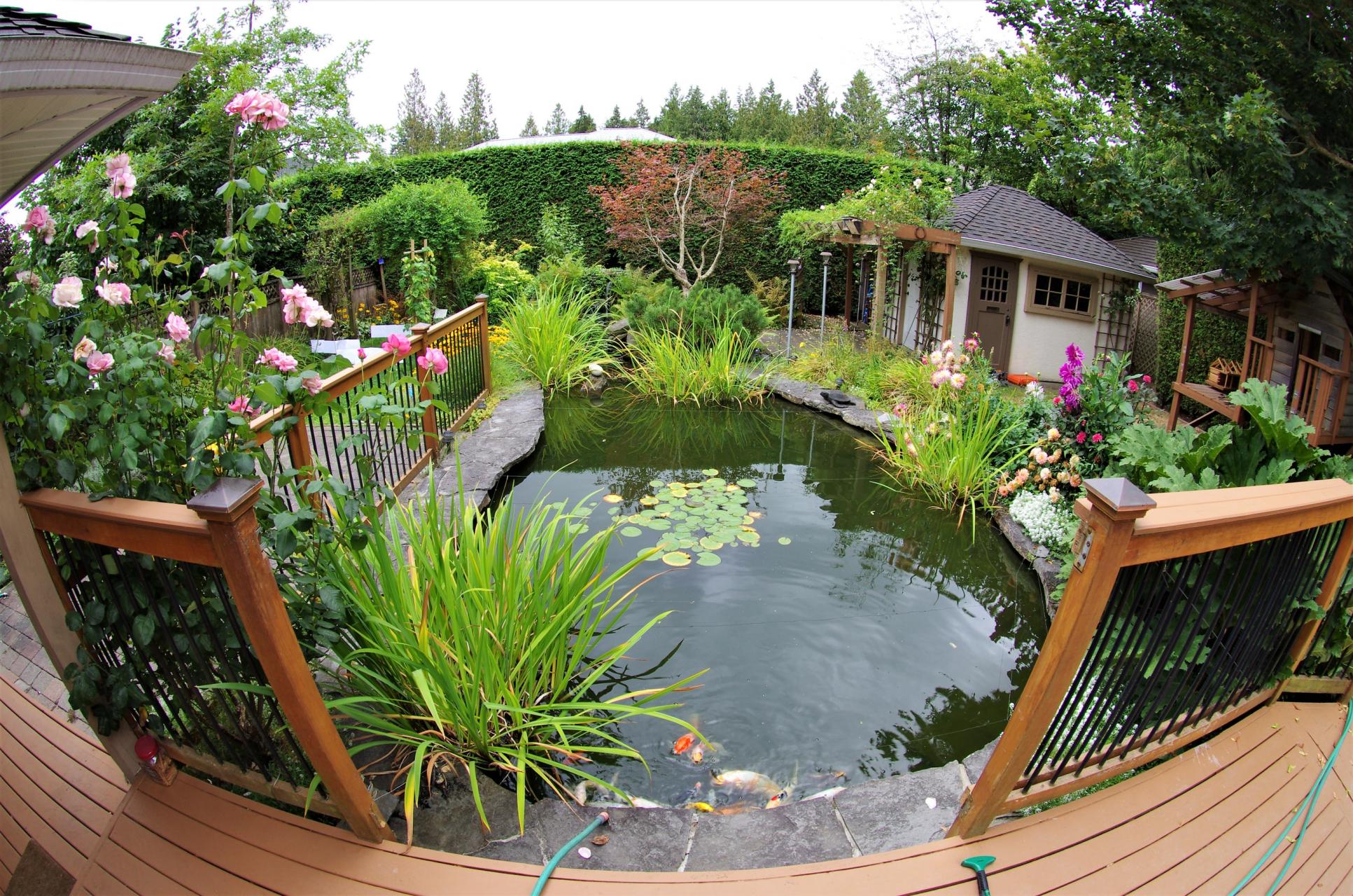
7.Build a raised bed
A raised bed makes growing vegetables easier, particularly if you have heavy soil. It can also be useful if you have a disability or mobility issues. You can buy raised bed kits or make your own using old scaffolding planks. Then simply fill with topsoil and start planting.

8.Make a bee hotel
A bee hotel provides nesting habitat for solitary bees such as red mason bees, which are on the wing from April to June, and leafcutter bees, which are flying from June to August. Rather than forming large nests like bumblebees and honeybee, solitary bees lay individual eggs in cells, stocked with nectar and pollen for the grubs to eat when they hatch. They don’t sting. Fix your bee hotel to a south-east facing wall or fence, and keep an eye out for bee activity throughout summer.

9.Grow houseplants
If you don’t have a garden, or can’t get into the garden, you can bring a touch of the outdoors, in. Houseplants have been shown to clean the air in our homes, as well as lift our spirits. Planting up a few containers of choice houseplants will not only keep you occupied, but will provide you with a long season of interest. There are plenty of online houseplant retailers, and you can buy pots, compost and decorative pebbles online, too.

10.Design a new border
Have you been putting off revamping that garden border? Now is as good a time as any. Whether you’re after a prairie look, a woodland border or a gravel garden, we’ve got all the inspiration you need. Take on the project wisely – plan beforehand, carefully choosing which plants to grow and working out where to grow them. Buy your plants, and any other resources online, and – a new look for your garden.

Here are 10 garden jobs you can get on with now. They’ll help you to pass the time in a productive and purposeful way, getting you outdoors to enjoy fresh air, bird song and a bit of exercise.
1.Sow seeds
Sowing seeds and watching the plants grow is a great way to relieve stress. You could sow anything you fancy – annual herbs to use in cooking, flowers such as cosmos and sunflowers to brighten up the garden, or vegetables to use in nutritious meals later in the season. Use a seed tray and propagator if you have one, but pots filled with peat-free compost and covered with a clear plastic bag or clingfilm will work just as well.

2.Plant up a container display
A pretty container display can really help to lift the spirits. Consider asking someone to go to the garden centre for you, or buy mail-order plants or seeds. Choose from perennial plants that are in flower now, which you can transplant into the garden when they’re past their best, or annuals for a quick, seasonal display.

3.Feed the birds
Feeding the birds is great way to entertain yourself while self-isolating at home. Hang feeders in front of a window where you sit regularly, so you can watch the antics of the birds from your sofa. Buy feeders and food online from a reputable supplier and avoid cheaper seed mixes if possible – these are less likely to attract garden birds. Sunflower hearts are a great all-round choice, attracting a wide range of species. Why not take the time to learn the different birds that visit the feeders while you’re at it?

4.Clean the greenhouse
For many people, there’s never a good time to clean the greenhouse. But doing so will bring more light to tender seedlings growing inside, as well as remove harmful pests and pathogens, which could be lingering on from last year. This is a great, active job that might help you to work up a sweat – get your scrubbing brush, sponge and hosepipe ready, for mini workout.

5.Install a water butt
If you’ve been meaning to install a water butt for a while then now’s the time to do it. You can buy whole kits online and simply follow instructions on installing it. Wall-mounted water butts are a great way to save space. It’s fairly straightforward to connect them to a downpipe from your house, shed or greenhouse.

6.Build a garden pond
A pond is one of the best garden habitats you can create for wildlife, attracting birds, amphibians, mammals and aquatic insects. Digging a pond is labour intensive but extremely rewarding – if you’re missing your gym then this is the job for you.
Buy pond liner online and see if you can source plants from your local garden centre – again, see if they will deliver. If not, there are plenty of online retailers that sell pond plants. Choose a mix of oxygenating, floating and submerged plants, to provide the best variety of habitats.
Once you’ve dug your pond, consider buying a book on freshwater life, and a pond net, then monitor which new species colonise the water. There’s a whole new world to explore beneath the surface.

7.Build a raised bed
A raised bed makes growing vegetables easier, particularly if you have heavy soil. It can also be useful if you have a disability or mobility issues. You can buy raised bed kits or make your own using old scaffolding planks. Then simply fill with topsoil and start planting.

8.Make a bee hotel
A bee hotel provides nesting habitat for solitary bees such as red mason bees, which are on the wing from April to June, and leafcutter bees, which are flying from June to August. Rather than forming large nests like bumblebees and honeybee, solitary bees lay individual eggs in cells, stocked with nectar and pollen for the grubs to eat when they hatch. They don’t sting. Fix your bee hotel to a south-east facing wall or fence, and keep an eye out for bee activity throughout summer.

9.Grow houseplants
If you don’t have a garden, or can’t get into the garden, you can bring a touch of the outdoors, in. Houseplants have been shown to clean the air in our homes, as well as lift our spirits. Planting up a few containers of choice houseplants will not only keep you occupied, but will provide you with a long season of interest. There are plenty of online houseplant retailers, and you can buy pots, compost and decorative pebbles online, too.

10.Design a new border
Have you been putting off revamping that garden border? Now is as good a time as any. Whether you’re after a prairie look, a woodland border or a gravel garden, we’ve got all the inspiration you need. Take on the project wisely – plan beforehand, carefully choosing which plants to grow and working out where to grow them. Buy your plants, and any other resources online, and – a new look for your garden.

0
0
求助
Tiger Palm
2019年08月29日

Need help what is this plant Can I plant it outside live in Central Flo rida
Tha nks
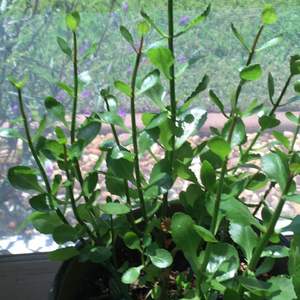
Tha nks

0
0
Plantlin:This looks like Kalanchoe blossefeldiana.
vanno28
2019年08月03日

Anyone can help me with this problem? It becomes so watery and then it just whittered off and i feel it’s dying
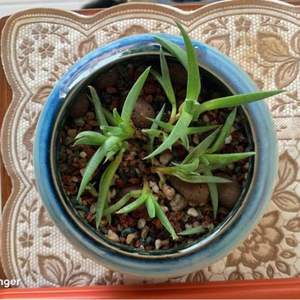

0
0
求助
BeautifullyMad
2019年06月21日

If we can just have a moment of silence for Dr. Bactus LongJohn (inside joke lol). can anyone tell me what happened...woke up and he was on the counter.. ive had it for 3 or 4 years now and its never had a problems...help please so i doesnt happen to my last cactus.. 2 down. 1 to go..


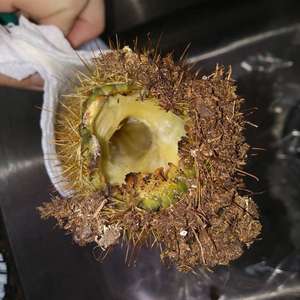
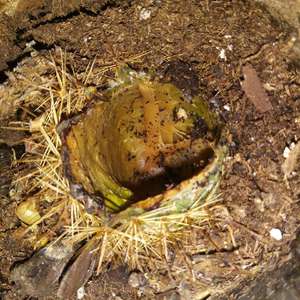
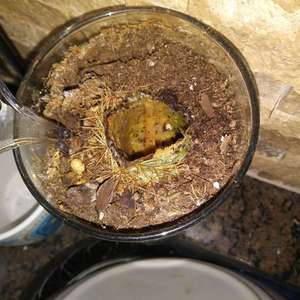





1
0
求助
BeautifullyMad
2019年06月06日

I need urgent help from all my fellow plant lovers out there!!! i have multiple cacti. i have had this one for at least 2 years maybe 3. i have NEVER had a cacti do this. its my office plant and i honestly have no clue what happened. i havent changed its regiment. if anyone knows how I can save it or at least save part of it I would really really appreciate any help that you can offer thank you so much!!
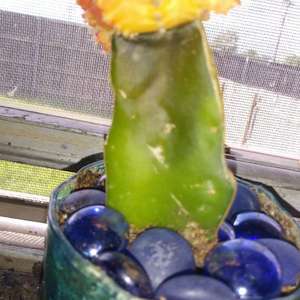
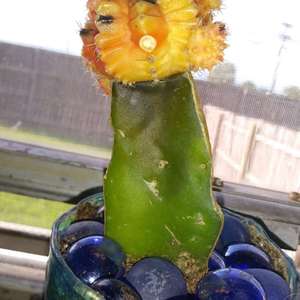
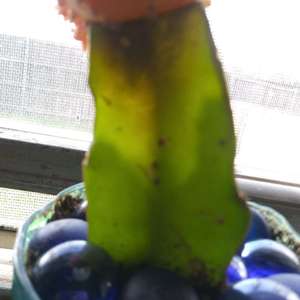
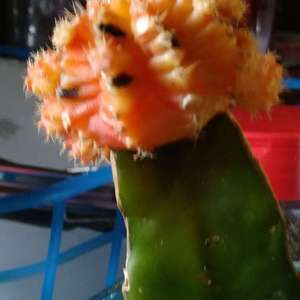
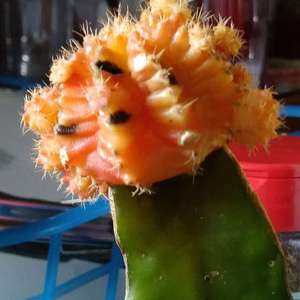
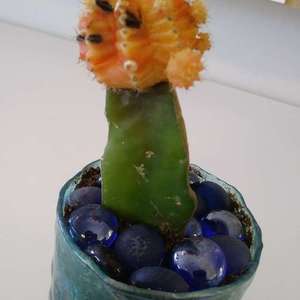






0
1
求助
suculea
2019年05月17日

Help with ID please! What kind of begonia is it? or maybe you can recommend some keys to look at? thank you

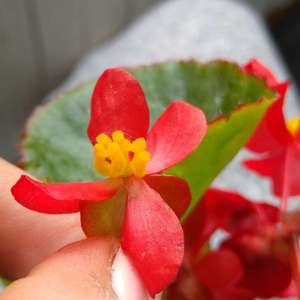






0
0
求助
suculea
2019年05月12日

Does anybody know what kind of Kalanchoe it is? any help would be appreciated 💓

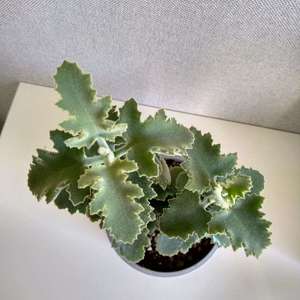
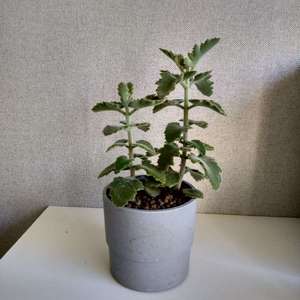
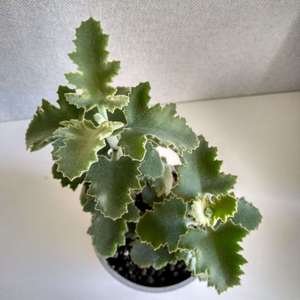




0
0
求助
caprice
2019年04月20日

Good day. Can anyone help to ID what type of Echeveria agavoides is this? Thank you!

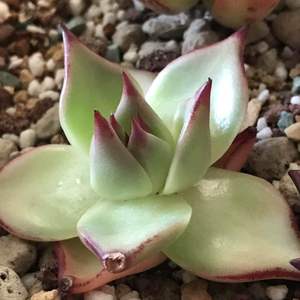




0
0
落在天上的轻:Echeveria agavoides 'sirius or Juliet.
More sunshie can make it more beautiful.


